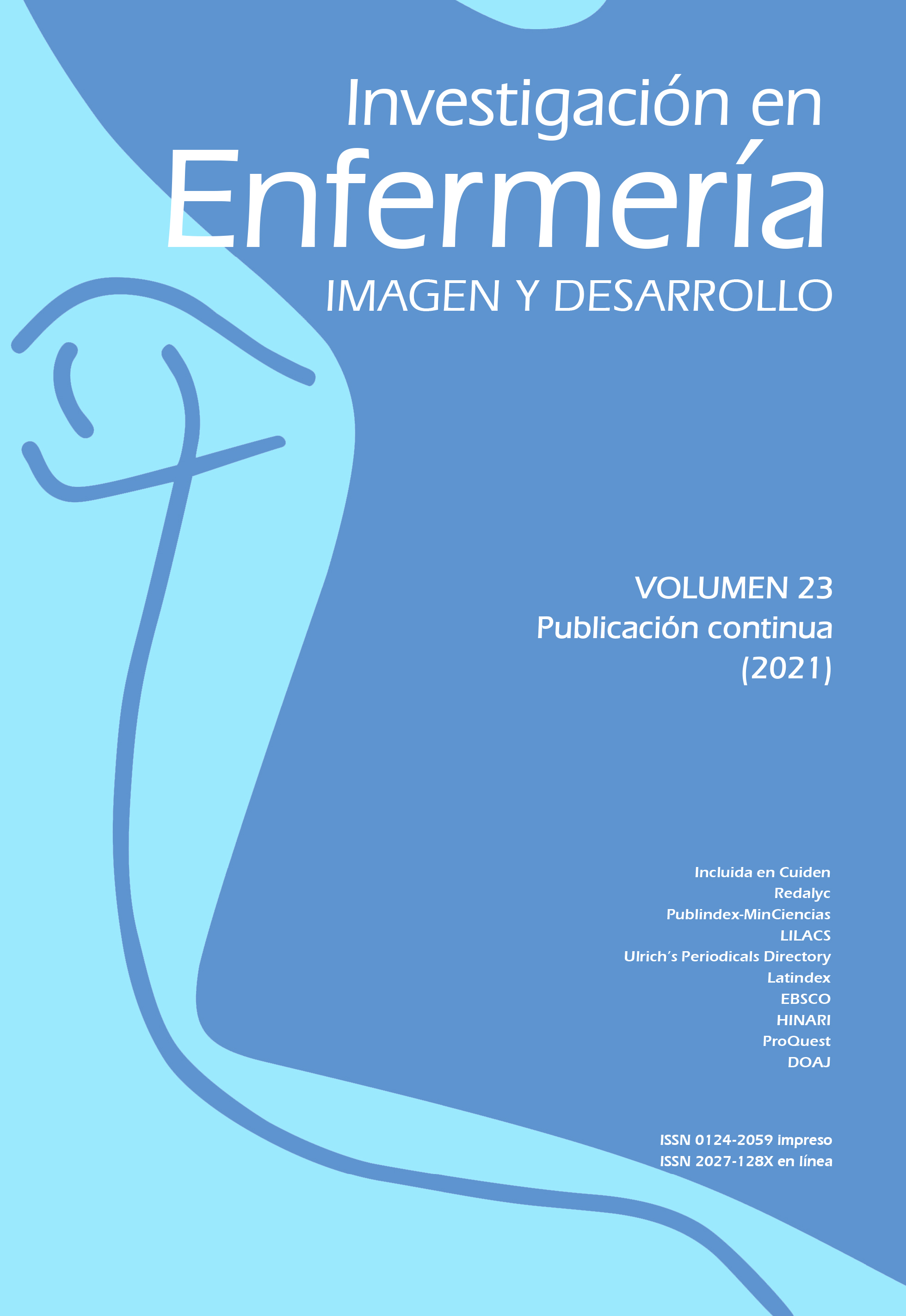Resumo
Introducción: la educación interprofesional (EIP) se dene como una iniciativa educativa, formativa o docente que involucra a más de una profesión en el aprendizaje conjunto e interactivo. La formación del recurso humano en salud tiene como desafío plantear soluciones a la escasez de personal sanitario en el mundo y formar profesionales que tengan un desempeño óptimo. Objetivo: caracterizar las publicaciones relacionadas con la implementación de modelos en educación interprofesional y el impacto generado en algunos aspectos relacionados con la seguridad del paciente. Método: se realizó una revisión sistemática de la literatura cientíca en Pubmed, Science Direct, Scielo, LILACS y Google Scholar con siete estrategias de búsqueda garantizando la exhaustividad y reproducibilidad en las fases de la guía PRISMA. Resultados: se incluyeron n = 33 estudios de los cuales n = 19 (57,5%) fueron aplicados en el contexto hospitalario, n = 14 (42,4%) utilizaron metodologías cuasiexperimentales, de estos n = 4 estudios miden desenlaces directos relacionados con la seguridad del paciente, y en los otros n = 29 (87,8%) se encontró una mejora en la comunicación, percepción y conocimiento en los equipos de trabajo. Conclusión: el aprendizaje interprofesional mejora la comunicación y la interacción entre los profesionales de salud. No obstante, es difícil generalizar los resultados debido a la diversidad de metodologías de interacción interprofesional aplicadas en los estudios.
World Health Organization. Framework for action on interprofessional education and collaborative practice. Geneva: WHO; 2010.
Thistlethwaite JE. Interprofessional education. J Clin Nurs. 2008;17(4):425-6. https://doi.org/10.1111/j.1365-2702.2007.02161.x
Thistlethwaite J. Interprofessional education: a review of context, learning and the research agenda. Med Educ. 2012;46(1):58-70. 10.1111/j.1365-2923.2011.04143.x
Thistlethwaite J. Interprofessional education: 50 years and counting. Med Educ. 2012 Ene;50(11):1082-6. https://doi.org/10.1111/medu.12959
Frenk J, Chen L, Bhutta ZA, Cohen J, Crisp N, Evans T, et al. Health professionals for a new century: transforming education to strengthen health systems in an interdependent world. Lancet. 2010 Nov;376(9756):1923-58. https://doi.org/10.1016/S0140-6736(10)61854-5
Menezes F, Rodrigues F, Cassiani S. Interprofessional health education in the region of the Americas. Rev. Latino-Am. Enfermagem. 2018;26:e3013. https://doi.org/10.1590/1518-8345.0000.3013
Zwarenstein M, Reeves S, Barr H, Hammick M, Koppel I, Atkins J. Interprofessional education: effects on professional practice and health care outcomes. Cochrane Database Syst Rev. 2001;(1):CD002213. https://doi.org/10.1002/14651858.CD002213
Reeves S, Pelone F, Harrison R, Goldman J, Zwarenstein M. Interprofessional collaboration to improve professional practice and healthcare outcomes. Cochrane Database Syst Rev.6:CD000072.
Reeves S, Clark E, Lawton S, Ream M, Ross F. Examining the nature of interprofessional interventions designed to promote patient safety: a narrative review. Int J Qual Health Care. 2017 Abr;29(2):144-50. https://doi.org/10.1093/intqhc/mzx008
Poling D, Labarbera D, Kiersma M. Does interprofessional education change student attitudes about interprofessional learning and patient safety? Health, Interprofessional Practice and Education. 2015;2(3):eP1074. http://doi.org/10.7772/2159-1253.1074
Liaw SY, Zhou WT, Lau TC, Siau C, Chan SW. An interprofessional communication training using simulation to enhance safe care for a deteriorating patient. Nurse Educ Today. 2014 Feb;34(2):259-64. http://doi.org/10.1016/j.nedt.2013.02.019
Vandenbroucke JP., Von Elm E, Altman DG, Gøtzsche PC, Mulrow CD, Pocock SJ, et al. Mejorar la comunicación de estudios observacionales en epidemiología (STROBE): explicación y elaboración. Gac Sanit. 2009 Abr; 23(2):158e1-158e28.
Sauter TC, Hautz WE, Hostettler S, Brodmann-Maeder M, Martinolli L, Lehmann B, et al. Interprofessional and interdisciplinary simulation-based training leads to safe sedation procedures in the emergency department. Scand J Trauma Resusc Emerg Med. 2016;24:97. https://doi.org/10.1186/s13049-016-0291-7
James TA, Page JS, Sprague J. Promoting interprofessional collaboration in oncology through a teamwork skills simulation programme. J Interprof Care. 2016;30(4):539-41. https://doi.org/10.3109/13561820.2016.1169261
Wong AH, Gang M, Szyld D, Mahoney H. Making an “attitude adjustment”: using a simulation-enhanced interprofessional education strategy to improve attitudes toward teamwork and communication. Simul Healthc. 2016 Abr;11(2):117-25. https://doi.org/10.1097/SIH.0000000000000133
Nagelkerk J, Peterson T, Pawl BL, Teman S, Anyangu AC, Mlynarczyk S, et al. Patient safety culture transformation in a children's hospital: an interprofessional approach. J Interprof Care. 2014;28(4):358-64. https://doi.org/10.3109/13561820.2014.885935
Wilson AJ, Palmer L, Levett-Jones T, Gilligan C, Outram S. Interprofessional collaborative practice for medication safety: Nursing, pharmacy, and medical graduates’ experiences and perspectives. J Interprof Care. 2016 Sep;30(5):649-54. https://doi.org/10.1080/13561820.2016.1191450
Cox M, Cuff P, Brandt B, Reeves S, Zierler B. Measuring the impact of interprofessional education on collaborative practice and patient outcomes. J Interprof Care. 2016;30(1):1-3. https://doi.org/10.3109/13561820.2015.1111052
Brock D, Abu-Rish E, Chiu CR, Hammer D, Wilson S, Vorvick L, et al. Interprofessional education in team communication: working together to improve patient safety. Postgrad Med J. 2013 Nov;22(5):414-23. https://doi.org/10.1136/postgradmedj-2012-000952rep
Foronda C, MacWilliams B, McArthur E. Interprofessional communication in healthcare: An integrative review. Nurse Educ Pract. 2016;19:36-40. https://doi.org/10.1016/j.nepr.2016.04.005
Evans AM, Ellis G, Norman S, Luke K. Patient safety education - a description and evaluation of an international, interdisciplinary e-learning programme. Nurse Educ Today. 2014 Feb;34(2):248-51. https://doi.org/10.1016/j.nedt.2013.03.009
Lisbon D, Allin D, Cleek C, Roop L, Brimacombe M, Downes C, et al. Improved knowledge, attitudes, and behaviors after implementation of teamstepps training in an academic emergency department: a pilot report. Am J Med Qual. 2016;31(1):86-90. https://doi.org/10.1177/1062860614545123

Este trabalho está licenciado sob uma licença Creative Commons Attribution 4.0 International License.
Copyright (c) 2021 Investigación en Enfermería: Imagen y Desarrollo


